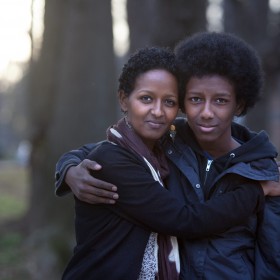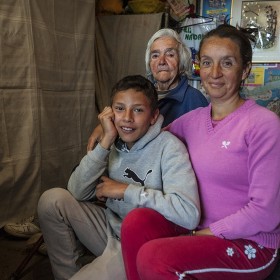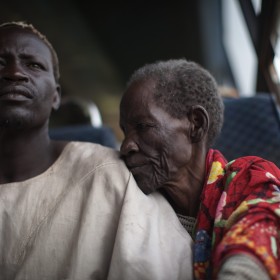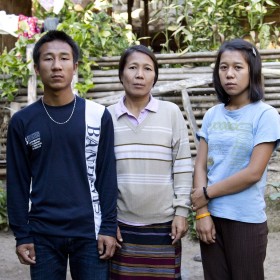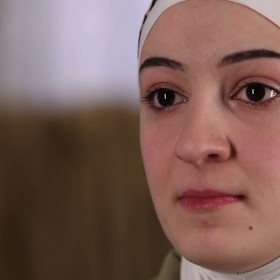Neil Gaiman tells Ayman’s Story
Best selling author and UNHCR High Profile Supporter, Neil Gaiman, spent time with the amazing Ayman in Zaa’tari, a camp for 100,000 Syrian refugees in Jordan. Here’s Ayman’s story.
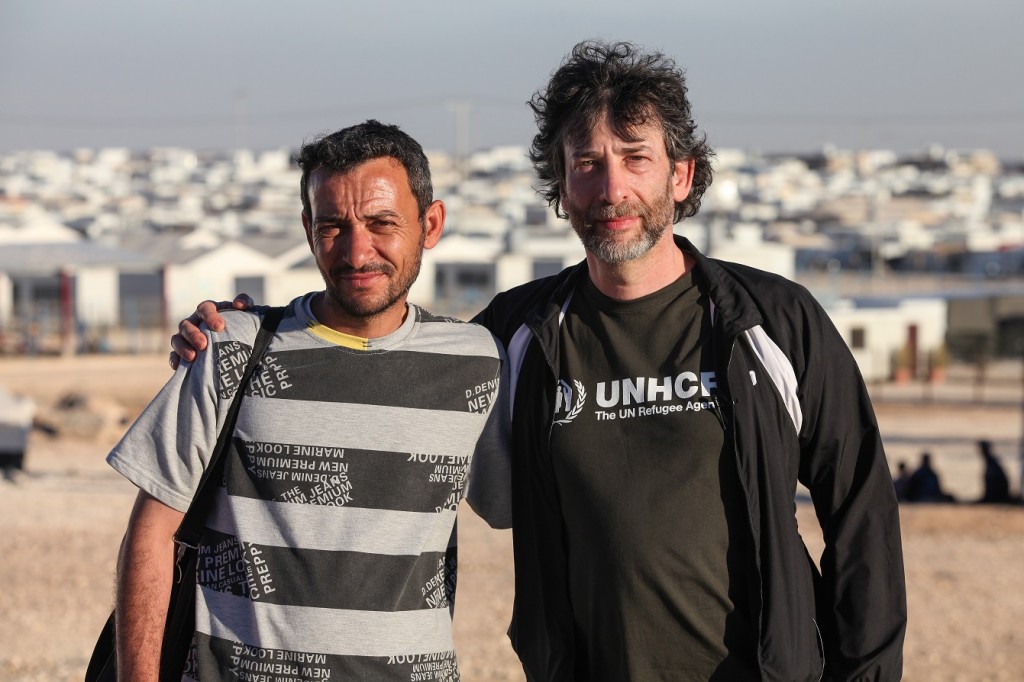
Ayman and Neil Gaiman. Photo by UNHC/J. Matas/2014.
Ayman is married with two children and works a full day as a community mobiliser for an NGO in Zaatri. He then comes home and goes on his rounds as a volunteer medic. Some refugees have mobility problems so find it challenging to get to a healthcare centre, but sometimes the refugees he treats simply prefer to be treated by someone from their own community rather than see a doctor or nurse that they do not know. Ayman has a gentle and caring bedside manner and strives every day to make things better for others, often at cost to his own health and family life. He has lost 18 kg in the past year as he has so little time to sit and eat with his wife and children.
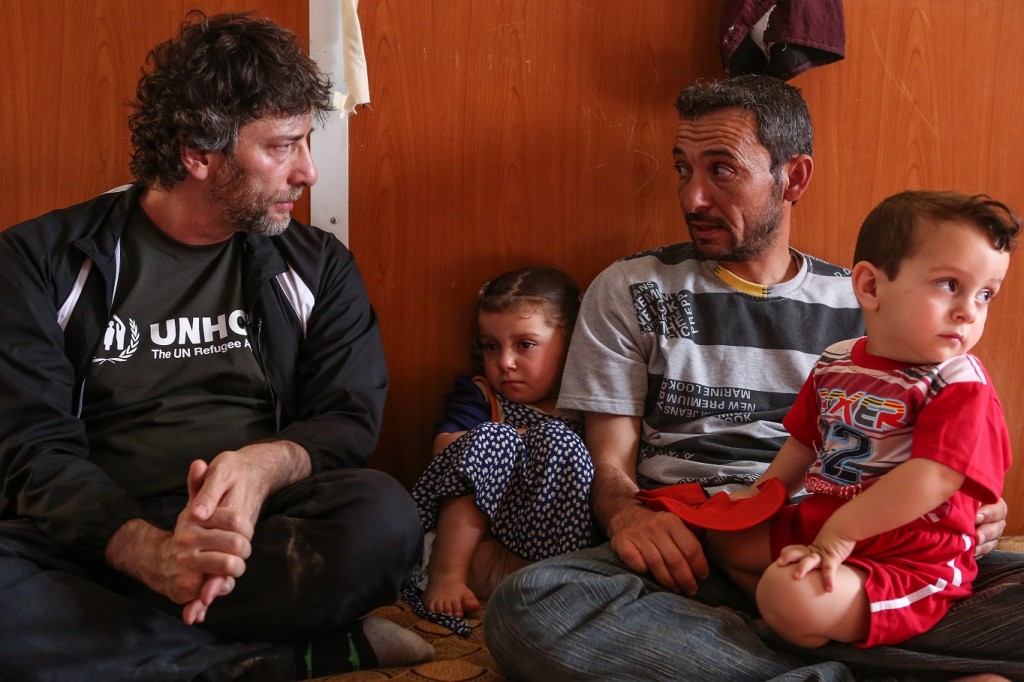
Neil talking to Ayman in his house. Photo by UNHCR/J. Matas/2014.
Ayman lived in Daraa and left his house when his village came under attack. His brother lost one of his legs in a bombardment and he feared for the lives of his four children.
Now his 6 and 7-year-old children are in school in the camp. They know what he does and when someone knocks on the caravan they say “doctor, doctor, there is someone at the door”.
Ayman does not get paid for the rounds that he makes after his day job as a community mobiliser. He does it because he wants to support people and care for his community. He says he would help any person inside Zaatari, or outside Zaatari – it doesn’t matter about money or religion – he just wants to make people better.
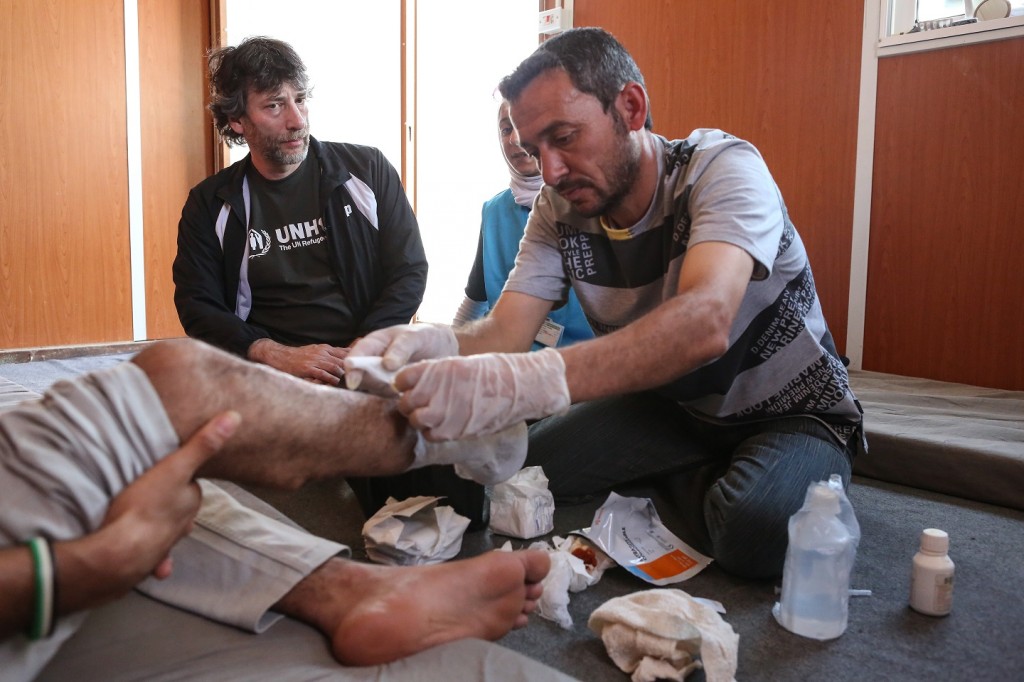
Ayman changing foot dressing. Photo by UNHCR/J. Matas/2014.
Ayman visits a young man of 22 whose foot was blown off by landmine. He changes the dressing on his bandage. When he arrived here 4 months ago, his leg and foot were in a very bad way – raw and sore – and he needed a skin graft.
This is just one of up to seven visits Ayman makes each evening after he finishes his community work.

Ayman changing girl’s dressing. Photo by UNHCR/J. Matas/2014.
Ayman visits 11-year-old Rania who lost a third of her jaw bone and had her arms shattered after a bomb that destroyed her house. He goes every three days to change the dressings. While Ayman gently removes the bandages and cleans the flesh wounds, she lies still and patient, her eyes placid.
She needs further surgery but in the meantime his mission is to keep her wounds clean and free of infection. He usually gives her painkillers but he doesn’t have any left.
Rania is in pain but still manages to smile and tell us how she loved school in Syria and wants to go home with her remaining family – her father was killed but she has five sisters.
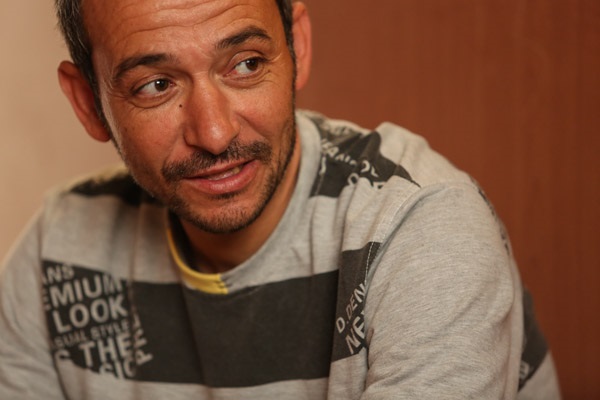
Ayman. Photo by UNHCR/J. Matas/2014.
Ayman told Neil “My first hope is that Syria will be okay and then, if everything is fine, I’ll return there and continue practicing medicine. But if return isn’t possible I’ll practice here…”
“To me the word ‘home’ means my life. I’m waiting for the moment when I get into Syria again and I kiss the ground of Syria. I sometimes picture this moment right before I go to sleep and tears come. Sometimes I have strength but when I am feeling weak and think of this picture, I cry.”
Captions by UNHCR/2014.




